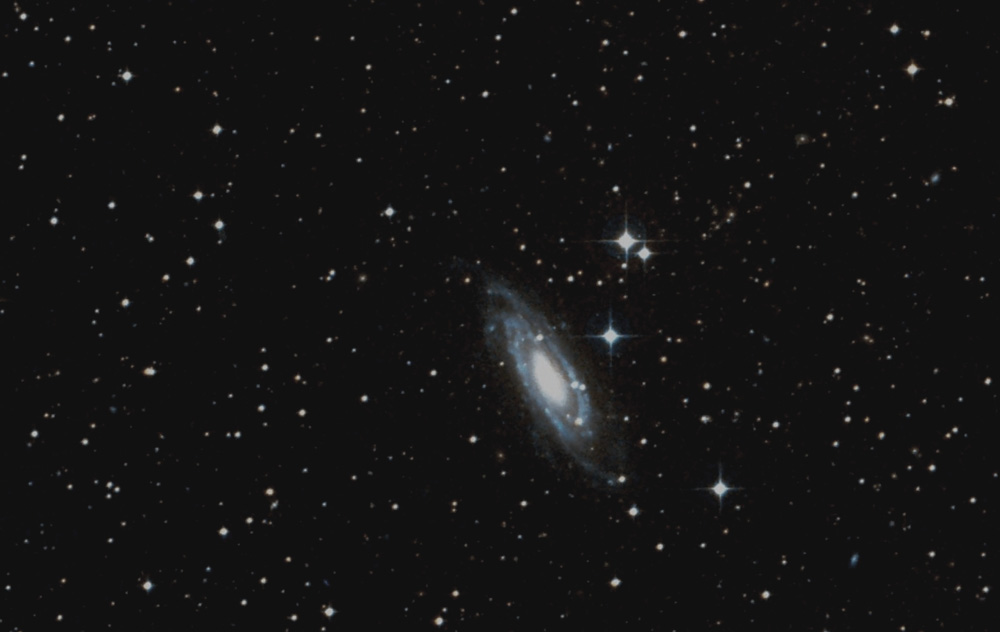STARLOG
HUNTING WABBITS
JANUARY 23, 2017
| Observer: |
Tom Campbell |
| Location: |
College Station, Texas (Long: 101°56'W Lat: 33°47'N) |
| Telescope: |
Zhumell 12" f/5 Dobsonian |
| Eyepieces: |
Explore Scientific 18mm (83x)
Explore Scientific 11mm (136x) |
| Lenses: |
Celestron Luminos Barlow (2.5x) |
| Weather: |
The sky was clear. Temperature was in the 60s (F), with a slight breeze. But as the evening progressed, the wind increased and the temperatures dropped to the low 50s. |
OBSERVING SUMMARY:
LEPUS: NGC 1964, S 473
ORION: M42, θ1 Ori, θ2 Ori
Believe it or not, tonight was the first decent night of the year to do a little observing. The rest of the month has been racked with a combination of clouds, wind and rain.
Orion was high in the southern sky and made a tempting target. I took aim at M42, the Orion Nebula, to test the sky conditions.
| M 42 (Orion Nebula) |
Orion |
Diffuse Nebula |
8:15pm CST |
 |
M42 looked gorgeous tonight, its billowy clouds of nebulosity appearing various shades of green and gray. Long streamers of gas spread out like wings from the center, which contained a thick, dark lane. The Trapezium (θ1 Ori) could be seen nestled inside the nebula, but only 4 stars were easily visible and even they were difficult to get into sharp focus. The E component of the sextuple star system kept winking in and out, even at higher magnifications. Hmm. Good nebulosity, mushy stars. It seems tonight's sky had good transparency but bad seeing. |
| |
| θ2 Ori |
Orion |
Multiple Star |
8:35pm CST |
 |
At 136x, this triple star is in the same field of view as θ1 Ori (The Trapezium). The stars are almost in a straight line, reminiscent of a miniature version of Orion's Belt. They seem to follow the inner edge of one of the streamers of nebulosity in M42. The brightest member is closest to the Trapezium and the faintest member is the farthest away. The second star is a bit closer to the primary. All are a similar magnitude, with perhaps only a single magnitude of difference between the brightest and faintest star. |
| |
Lepus, the Hare, was right below Orion. It was about as high in the sky as it is ever going to get, so I flipped through my observing list to see what I wanted to look at there.
| NGC 1964 |
Lepus |
Spiral Galaxy |
9:30pm CST |
 |
This one is fairly easy to locate, as there is a triangle of stars right next to it. At 83X, I could detect a stellar core with a bit of fuzziness around it. Kicking up the power to 136X, the stellar core was steadier, and the surrounding fuzzy patch was a bit larger, but still no real shape could be discerned. It appeared to be nearly perpendicular to the triangle of stars, however. |
| |
| S 473 |
Lepus |
Double Star |
9:40pm CST |
I came across this pair of stars while trying to starhop to NGC 1964. This is a wide double, easily split at 83X. It is located just off of μ Leporis. The primary has a pale yellow-white color and the secondary appeared yellow-orange and about a magnitude fainter. It looks very nice and jumps out at you as you sweep the area. |
| |
The wind was picking up and it was starting to get downright chilly. I briefly went back inside to grab my coat.
I spent the next hour or so looking for NGC 1832, another galaxy that might be within reach of my telescope in these sky conditions. I know I found the right field of stars in my eyepiece, but I just couldn't see any signs of the galaxy. I'll have to try again at a darker site.
The wind was even stronger now and it was difficult to keep my telescope steady, so I decided to pack it in. I found a couple of new (to me) objects tonight, so even though I didn't see a lot of things, I still felt successful.


